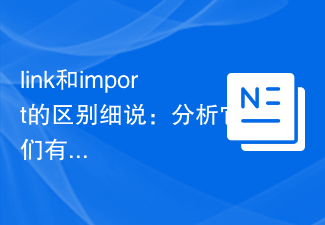Export/Import DataPump Parameter ACCESS_METHOD - How to Enforce a Method of Loading and Unloading Data ? [ID 552424.1] Modified 06-APR-2009 Type HOWTO Status PUBLISHED In this Document Goal Solution 1. Introduction. 2. Export Data Pump: un
|
Export/Import DataPump Parameter ACCESS_METHOD - How to Enforce a Method of Loading and Unloading Data ? [ID 552424.1] |
||
|
|
||
|
|
Modified 06-APR-2009 Type HOWTO Status PUBLISHED |
|
In this Document
Goal
Solution
1. Introduction.
2. Export Data Pump: unloading data in "Direct Path" mode.
3. Export Data Pump: unloading data in "External Tables" mode.
4. Import Data Pump: loading data in "Direct Path" mode.
5. Import Data Pump: loading data in "External Tables" mode.
6. How to enforce a specific load/unload method ?
7. Known issues.
@ 8. For Support: Enhancement Requests.
References
Applies to:
Oracle Server - Enterprise Edition - Version: 10.1.0.2 to 11.1.0.6
Oracle Server - Personal Edition - Version: 10.1.0.2 to 11.1.0.6
Oracle Server - Standard Edition - Version: 10.1.0.2 to 11.1.0.6
Enterprise Manager for RDBMS - Version: 10.1.0.2 to 11.1
Information in this document applies to any platform.
Goal
Starting with Oracle10g, Oracle Data Pump can be used to move data in and out of a database. Data Pump can make use of different methods to move the data, and will automatically choose the fastest method. It is possible though, to manually enforce a specific method. This document demonstrates how to specify the method with which data will be loaded or unloaded with Data Pump.
Solution
1. Introduction.
Data Pump can use four mechanisms to move data in and out of a database:
- Data file copying;
- Direct path;
- External tables;
- Network link import.
The two most commonly used methods to move data in and out of databases with Data Pump are the "Direct Path" method and the "External Tables" method.
1.1. Direct Path mode.
After data file copying, direct path is the fastest method of moving data. In this method, the SQL layer of the database is bypassed and rows are moved to and from the dump file with only minimal interpretation. Data Pump automatically uses the direct path method for loading and unloading data when the structure of a table allows it.
1.2. External Tables mode.
If data cannot be moved in direct path mode, or if there is a situation where parallel SQL can be used to speed up the data move even more, then the external tables mode is used. The external table mechanism creates an external table that maps the dump file data for the database table. The SQL engine is then used to move the data. If possible, the APPEND hint is used on import to speed the copying of the data into the database.
Note: When the Export NETWORK_LINK parameter is used to specify a network link for an export operation, a variant of the external tables method is used. In this case, data is selected from across the specified network link and inserted into the dump file using an external table.
1.3. Data File Copying mode.
This mode is used when a transport tablespace job is started, i.e.: the TRANSPORT_TABLESPACES parameter is specified for an Export Data Pump job. This is the fastest method of moving data because the data is not interpreted nor altered during the job, and Export Data Pump is used to unload only structural information (metadata) into the dump file.
1.4. Network Link Import mode.
This mode is used when the NETWORK_LINK parameter is specified during an Import Data Pump job. This is the slowest of the four access methods because this method makes use of an INSERT SELECT statement to move the data over a database link, and reading over a network is generally slower than reading from a disk.
The "Data File Copying" and "Network Link Import" methods to move data in and out of databases are outside the scope of this article, and therefore not discussed any further.
For details about the access methods of the classic export client (exp), see:
Note:155477.1 "Parameter DIRECT: Conventional Path Export Versus Direct Path Export"
2. Export Data Pump: unloading data in "Direct Path" mode.
Export Data Pump will use the "Direct Path" mode to unload data in the following situations:
EXPDP will use DIRECT_PATH mode if:
2.1. The structure of a table allows a Direct Path unload, i.e.:
- The table does not have fine-grained access control enabled for SELECT.
- The table is not a queue table.
- The table does not contain one or more columns of type BFILE or opaque, or an object type containing opaque columns.
- The table does not contain encrypted columns.
- The table does not contain a column of an evolved type that needs upgrading.
- If the table has a column of datatype LONG or LONG RAW, then this column is the last column.
2.2. The parameters QUERY, SAMPLE, or REMAP_DATA parameter were not used for the specified table in the Export Data Pump job.
2.3. The table or partition is relatively small (up to 250 Mb), or the table or partition is larger, but the job cannot run in parallel because the parameter PARALLEL was not specified (or was set to 1).
Note that with an unload of data in Direct Path mode, parallel I/O execuation Processes (PX processes) cannot be used to unload the data in parallel (paralllel unload is not supported in Direct Path mode).
3. Export Data Pump: unloading data in "External Tables" mode.
Export Data Pump will use the "External Tables" mode to unload data in the following situations:
EXPDP will use EXTERNAL_TABLE mode if:
3.1. Data cannot be unloaded in Direct Path mode, because of the structure of the table, i.e.:
- Fine-grained access control for SELECT is enabled for the table.
- The table is a queue table.
- The table contains one or more columns of type BFILE or opaque, or an object type containing opaque columns.
- The table contains encrypted columns.
- The table contains a column of an evolved type that needs upgrading.
- The table contains a column of type LONG or LONG RAW that is not last.
3.2. Data could also have been unloaded in "Direct Path" mode, but the parameters QUERY, SAMPLE, or REMAP_DATA were used for the specified table in the Export Data Pump job.
3.3. Data could also have been unloaded in "Direct Path" mode, but the table or partition is relatively large (> 250 Mb) and parallel SQL can be used to speed up the unload even more.
Note that with an unload of data in External Tables mode, parallel I/O execuation Processes (PX processes) can be used to unload the data in parallel. In that case the Data Pump Worker process acts as the coordinator for the PX processes. However, this does not apply when the table has a LOB column: in that case the table parallelism will always be 1. See also:
Bug:5943346 "PRODUCT ENHANCEMENT: PARALLELISM OF DATAPUMP JOB ON TABLE WITH LOB COLUMN"
4. Import Data Pump: loading data in "Direct Path" mode.
Import Data Pump will use the "Direct Path" mode to load data in the following situations:
IMPDP will use DIRECT_PATH if:
4.1. The structure of a table allows a Direct Path load, i.e.:
- A global index does not exist on a multipartition table during a single-partition load. This includes object tables that are partitioned.
- A domain index does not exist for a LOB column.
- The table is not in a cluster.
- The table does not have BFILE columns or columns of opaque types.
- The table does not have VARRAY columns with an embedded opaque type.
- The table does not have encrypted columns.
- Supplemental logging is not enabled and the table does not have a LOB column.
- The table into which data is being imported is a pre-existing table and:
– There is not an active trigger, and:
– The table is partitioned and has an index, and:
– Fine-grained access control for INSERT mode is not enabled, and:
– A constraint other than table check does not exist, and:
– A unique index does not exist.
4.2 The parameters QUERY, REMAP_DATA parameter were not used for the specified table in the Import Data Pump job.
4.3. The table or partition is relatively small (up to 250 Mb), or the table or partition is larger, but the job cannot run in parallel because the parameter PARALLEL was not specified (or was set to 1).
5. Import Data Pump: loading data in "External Tables" mode.
Import Data Pump will use the "External Tables" mode to load data in the following situations:
IMPDP will use EXTERNAL_TABLE if:
5.1. Data cannot be loaded in Direct Path mode, because at least one of the following conditions exists:
- A global index on multipartition tables exists during a single-partition load. This includes object tables that are partitioned.
- A domain index exists for a LOB column.
- A table is in a cluster.
- A table has BFILE columns or columns of opaque types.
- A table has VARRAY columns with an embedded opaque type.
- The table has encrypted columns.
- Supplemental logging is enabled and the table has at least one LOB column.
- The table into which data is being imported is a pre-existing table and at least one of the following conditions exists:
– There is an active trigger
– The table is partitioned and does not have any indexes
– Fine-grained access control for INSERT mode is enabled for the table.
– An enabled constraint exists (other than table check constraints)
– A unique index exists
5.2. Data could also have been loaded in "Direct Path" mode, but the parameters QUERY, or REMAP_DATA were used for the specified table in the Import Data Pump job.
5.3. Data could also have been loaded in "Direct Path" mode, but the table or partition is relatively large (> 250 Mb) and parallel SQL can be used to speed up the load even more.
Note that with a load of data in External Tables mode, parallel I/O execuation Processes (PX processes) can be used to load the data in parallel. In that case the Data Pump Worker process acts as the coordinator for the PX processes. However, this does not apply when the table has a LOB column: in that case the table parallelism will always be 1. See also:
Bug:5943346 "PRODUCT ENHANCEMENT: PARALLELISM OF DATAPUMP JOB ON TABLE WITH LOB COLUMN"
6. How to enforce a specific load/unload method ?
In very specific situations, the undocumented parameter ACCESS_METHOD can be used to enforce a specific method to unload or load the data. Example:
<span>%expdp system/manager ... ACCESS_METHOD=DIRECT_PATH </span><span>%expdp system/manager ... ACCESS_METHOD=EXTERNAL_TABLE </span><span>or:</span><span>%impdp system/manager ... ACCESS_METHOD=DIRECT_PATH </span><span>%impdp system/manager ... ACCESS_METHOD=EXTERNAL_TABLE </span>
Important Need-To-Know's when the parameter ACCESS_METHOD is specified for a job:
- The parameter ACCESS_METHOD is an undocumented parameter and should only be used when requested by Oracle Support.
- If the parameter is not specified, then Data Pump will automatically choose the best method to load or unload the data.
- If import Data Pump cannot choose due to conflicting restrictions, an error will be reported:
ORA-31696: unable to export/import TABLE_DATA:"SCOTT"."EMP" using client specified AUTOMATIC method - The parameter can only be specified when the Data Pump job is initially started (i.e. the parameter cannot be specified when the job is restarted).
- If the parameter is specified, the method of loading or unloading the data is enforced on all tables that need to be loaded or unloaded with the job.
- Enforcing a specific method may result in a slower performance of the overall Data Pump job, or errors such as:
...
Processing object type TABLE_EXPORT/TABLE/TABLE_DATA
ORA-31696: unable to export/import TABLE_DATA:"SCOTT"."MY_TAB" using client specified DIRECT_PATH method
...
- To determine which access method is used, a Worker trace file can be created, e.g.:
<span>%expdp system/manager DIRECTORY=my_dir / </span><span>DUMPFILE=expdp_s.dmp LOGFILE=expdp_s.log / </span><span>TABLES=scott.my_tab TRACE=400300</span>
The Worker trace file shows the method with which the data was loaded (or unloaded for Import Data Pump):
...
KUPW:14:57:14.289: 1: object: TABLE_DATA:"SCOTT"."MY_TAB"
KUPW:14:57:14.289: 1: TABLE_DATA:"SCOTT"."MY_TAB" external table, parallel: 1
...
For details, see also:
Note:286496.1 " Export/Import DataPump Parameter TRACE - How to Diagnose Oracle Data Pump"
7. Known issues.
7.1. Bug 4722517 - Materialized view log not updated after import into existing table
- Defect: Bug:4722517 "MATERIALIZED VIEW LOG NOT UPDATED AFTER IMPORT DATAPUMP JOB INTO EXISTING TABLE"
- Symptoms: a materialized view is created with FAST REFRESH on a master table; if data is imported into this master table, then these changes (inserts) do not show up in the materialized view log
- Releases: 10.1.0.2.0 and higher
- Fixed in: not applicable, closed as not-a-bug
- Patched files: not applicable
- Workaround: if possible import into a temporary holding table then copy the data with "insert as select" into the master table
- Cause: a fast refresh does not apply changes that result from bulk load operations on masters, such as an INSERT with the APPEND hint used by Import Data Pump
- Trace: not applicable, changes are not propagated
- Remarks: see also Note:340789.1 "Import Datapump (Direct Path) Does Not Update Materialized View Logs "
7.2. Bug 5599947 - Export Data Pump is slow when table has a LOB column
- Defect: Bug:5599947 "DATAPUMP EXPORT VERY SLOW"
- Symptoms: Export Data Pump has low performance when exporting table with LOB column
- Releases: 11.1.0.6 and below
- Fixed in: not applicable, closed as not feasible to fix
- Patched files: not applicable
- Workaround: if possible re-organize the large table with LOB column and make it partitioned
- Cause: if a table has a LOB column, and the unload or load takes place in "External Tables" mode, then we cannot make use of parallel I/O execution Processes (PX processes)
- Trace: not applicable
- Remarks: see also Bug:5943346 "PRODUCT ENHANCEMENT: PARALLELISM OF DATAPUMP JOB ON TABLE WITH LOB COLUMN"
7.3. Bug 5941030 - Corrupt blocks after Import Data Pump when table has LONG / LONG RAW column
- Defect: Bug:5941030 "Datapump import can produce corrupt blocks when there is a LONG / LONG RAW"
- Symptoms: Direct Path import of a LONG / LONG RAW column can create corrupt blocks in the database. If DB_BLOCK_CHECKING is enabled then an ORA-600 [6917] error can be signalled. If not then the corrupt block can cause subsequent problems, like ORA-1498 (block check failure) on an analyze of the table.
- Releases: 11.1.0.6 and below
- Fixed in: 10.2.0.5.0 and 11.1.0.7.0 and higher; for some platforms a fix on top of 10.2.0.2.0 and on top of 10.2.0.3.0 is available with Patch:5941030
- Patched files: kdbl.o
- Workaround: if possible use the classic export and import clients to transfer this table
- Cause: internal issue with column count when loading table with LONG/LONG RAW column in Direct Path mode
- Trace: not applicable
- Remarks: see also Note:457128.1 "Logical Corruption Encountered After Importing Table With Long Column Using DataPump"
@ 8. For Support: Enhancement Requests.
@ Open Enhancement Requests:
References
BUG:4722517 - MATERIALIZED VIEW LOG NOT UPDATED AFTER IMPORT DATAPUMP JOB INTO EXISTING TABLE
BUG:4727162 - PRODUCT ENHANCEMENT: ADD NEW DATAPUMP EXT TAB ACCESS METHOD WITHOUT APPEND HINT
BUG:5599947 - DATAPUMP EXPORT VERY SLOW
BUG:5941030 - DATAPUMP IMPORT CAN CORRUPT DATA WHEN THERE IS A LONG / LONG RAW
BUG:5943346 - PRODUCT ENHANCEMENT: PARALLELISM OF DATAPUMP JOB ON TABLE WITH LOB COLUMN
NOTE:155477.1 - Parameter DIRECT: Conventional Path Export Versus Direct Path Export
NOTE:286496.1 - Export/Import DataPump Parameter TRACE - How to Diagnose Oracle Data Pump
NOTE:340789.1 - Import Datapump (Direct Path) Does Not Update Materialized View Logs
NOTE:365459.1 - Parallel Capabilities of Oracle Data Pump
NOTE:453895.1 - Checklist for Slow Performance of Export Data Pump (expdp) and Import DataPump (impdp)
NOTE:457128.1 - Logical Corruption Encountered After Importing Table With Long Column Using DataPump
NOTE:469439.1 - IMPDP Can Fail with ORA-31696 if ACCESS_METHOD=DIRECT_PATH Is Manually Specified
http://www.oracle.com/technology/pub/notes/technote_pathvsext.html
|
Related
Products
Keywords
Errors
|
------------------------------------------------------------------------------
Blog: http://blog.csdn.net/tianlesoftware
网上资源: http://tianlesoftware.download.csdn.net
相关视频:http://blog.csdn.net/tianlesoftware/archive/2009/11/27/4886500.aspx
DBA1 群:62697716(满); DBA2 群:62697977(满)
DBA3 群:62697850 DBA 超级群:63306533;
聊天 群:40132017
--加群需要在备注说明Oracle表空间和数据文件的关系,否则拒绝申请
 Vue Cli中出现'The requested module does not provide an export named' Error – 怎么解决?Aug 20, 2023 pm 07:25 PM
Vue Cli中出现'The requested module does not provide an export named' Error – 怎么解决?Aug 20, 2023 pm 07:25 PMVueCli中出现'Therequestedmoduledoesnotprovideanexportnamed'Error–怎么解决?在Vue项目的开发过程中,我们可能会遇到'Therequestedmoduledoesnotprovideanexportnamed'的错误提示。这个错误提示一般会出现在引入第三方组件时
 Python 的 import 是怎么工作的?May 15, 2023 pm 08:13 PM
Python 的 import 是怎么工作的?May 15, 2023 pm 08:13 PM你好,我是somenzz,可以叫我征哥。Python的import是非常直观的,但即使这样,有时候你会发现,明明包就在那里,我们仍会遇到ModuleNotFoundError,明明相对路径非常正确,就是报错ImportError:attemptedrelativeimportwithnoknownparentpackage导入同一个目录的模块和不同的目录的模块是完全不同的,本文通过分析使用import经常遇到的一些问题,来帮助你轻松搞定import,据此,你可以轻松创建属
 link和import的区别细说:分析它们有何不同?Jan 06, 2024 am 08:19 AM
link和import的区别细说:分析它们有何不同?Jan 06, 2024 am 08:19 AM深入解析:link与import的区别是什么?在开发网页或应用程序时,我们经常需要引入外部的CSS文件或JavaScript库来增强或定制我们的代码。在这个过程中,link和import是两种常用的方法。虽然它们的目的都是引入外部资源,但在具体的使用上存在一些区别。语法和位置:link:使用link标签将外部资源链接到HTML文件中,通常位于HTML文档的头
 浅析node中怎么使用import语法Mar 21, 2023 pm 06:53 PM
浅析node中怎么使用import语法Mar 21, 2023 pm 06:53 PMnode.js支持import语法,很简单一个知识点,但是却能提醒我们从知识误区里走出来,多关注外边的知识世界,不断打开自己的知识边界。
 link标签和import有什么区别Aug 28, 2023 am 11:19 AM
link标签和import有什么区别Aug 28, 2023 am 11:19 AMlink标签和import的区别有语法和用途、功能和特性、加载时机、兼容性和支持等。详细介绍:1、语法和用途,link标签是HTML标签,用于在HTML文档中引入外部资源,如CSS样式表、JavaScript脚本、图标等,import是ES6中的模块导入语法,用于在JavaScript文件中引入外部模块;2、功能和特性,link标签可以引入多种资源,如CSS样式表、图标等等。
 如何解决import包时报Java程序包不存在的问题Apr 19, 2023 am 10:22 AM
如何解决import包时报Java程序包不存在的问题Apr 19, 2023 am 10:22 AM网上有很多解决方式,我想到的都汇总起来了,方便以后查看,你可能采用其中一种就能解决问题,我是用了最后一种才解决。如果你要导入的包在Libraries下都本身一直没有存在,你这时就得看看pom里对应的依赖写的有没有问题,名字版本什么的在使用的仓库中有没有对应的jar包,如果确定没有问题,那么再尝试采取以下的前几种方式解决。1.执行Maven->reloadproject作用:重新导入Maven包2种方式:1.选择Project目录右键->Maven->reloadproject2
 export和export default的区别Oct 12, 2023 am 10:24 AM
export和export default的区别Oct 12, 2023 am 10:24 AMexport和export default的区别是export关键字用于导出一个或多个变量、函数或类,而export default关键字用于导出一个默认的变量、函数或类。在其他模块中,可以使用import关键字来导入这些导出的变量、函数或类。
 对比link和import:它们有哪些差异?Jan 06, 2024 pm 08:23 PM
对比link和import:它们有哪些差异?Jan 06, 2024 pm 08:23 PMlink与import之争:它们有何不同之处?在开发和编程中,我们经常需要与其他文件或模块进行交互。为了实现这种交互,链接(linking)和导入(importing)是两种常用的方式。然而,许多人可能并不清楚link和import有什么不同之处以及何时使用它们。本文将详细介绍link和import的区别,并提供代码示例。首先,我们来了解link的概念。链接


热AI工具

Undresser.AI Undress
人工智能驱动的应用程序,用于创建逼真的裸体照片

AI Clothes Remover
用于从照片中去除衣服的在线人工智能工具。

Undress AI Tool
免费脱衣服图片

Clothoff.io
AI脱衣机

AI Hentai Generator
免费生成ai无尽的。

热门文章

热工具

MinGW - 适用于 Windows 的极简 GNU
这个项目正在迁移到osdn.net/projects/mingw的过程中,你可以继续在那里关注我们。MinGW:GNU编译器集合(GCC)的本地Windows移植版本,可自由分发的导入库和用于构建本地Windows应用程序的头文件;包括对MSVC运行时的扩展,以支持C99功能。MinGW的所有软件都可以在64位Windows平台上运行。

SublimeText3 英文版
推荐:为Win版本,支持代码提示!

EditPlus 中文破解版
体积小,语法高亮,不支持代码提示功能

VSCode Windows 64位 下载
微软推出的免费、功能强大的一款IDE编辑器

ZendStudio 13.5.1 Mac
功能强大的PHP集成开发环境






